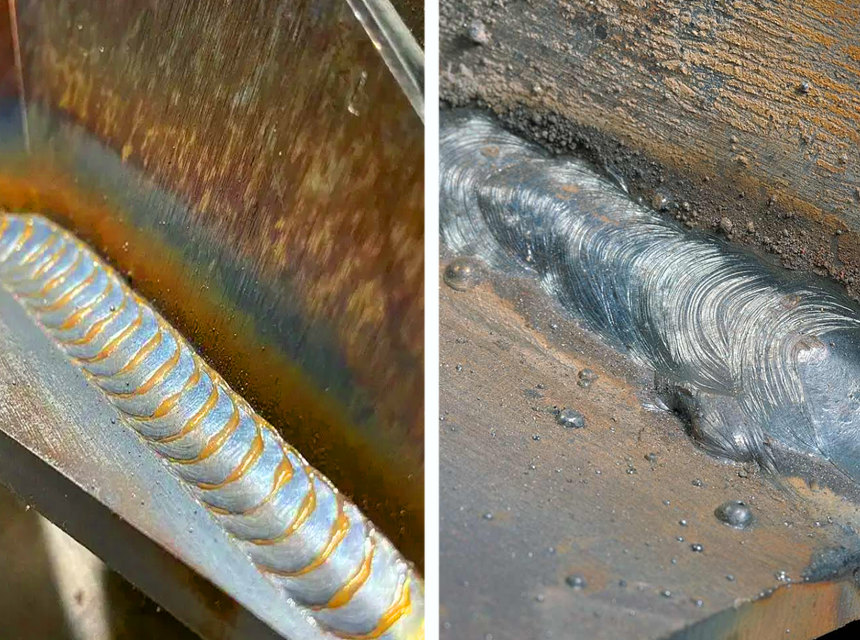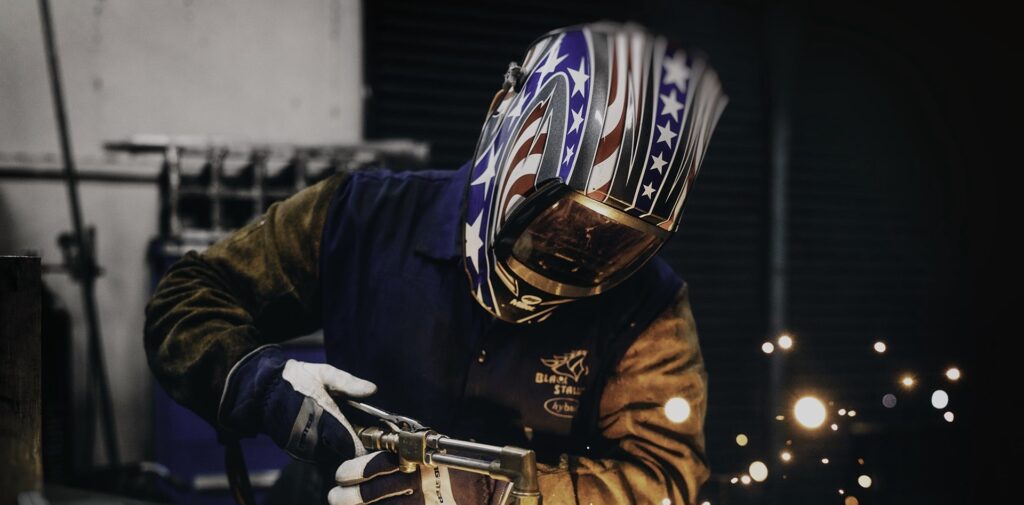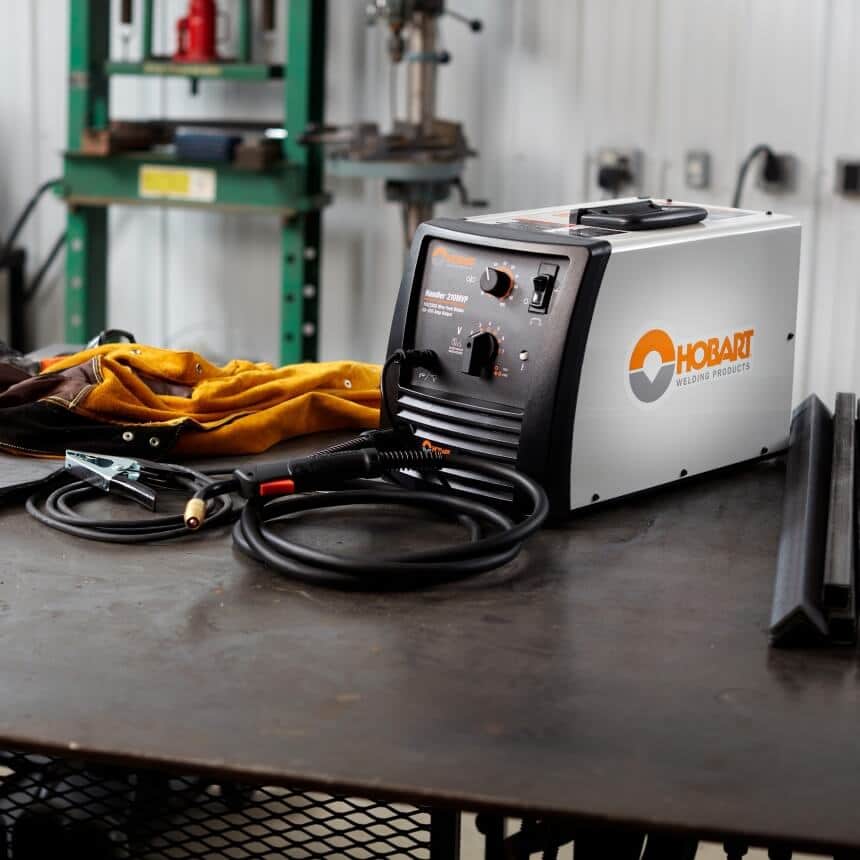It is not common to see a welder with his helmet and welding tools conducting his business in the rain. Since most welding types use electricity as their heat source, welding in the rain is an extreme sport.
On rare occasions, it might be necessary to weld in the rain. After all, hyperbaric welding requires the welder to weld underwater. This article will look at the risks associated with welding in the rain and how to avoid accidents in the inevitable circumstance of having to weld under inclement weather.
Welders are exposed to electricity charges and other workplace hazards by the nature of their job. This makes welding in the rain an exceptionally dangerous affair, given the high risks involved with exposure to electricity while it is raining.
https://youtu.be/aE4Dtl2IBJo
On the question—is welding in the rain dangerous—the answer is certainly yes.
In fact, according to a study published by the University of Delaware, iron and steel workers, as well as power linemen and construction workers, are some of the most dangerous jobs in the world. An interesting observation is that these jobs all have something in common–welding.
An action is said to be legal if it is permissible under the law or if no law forbids it. Since no law prohibits welding in the rain, it is correct to say that it is legal.
Even the Occupational Safety and Health (OSHA) Act of 1970, as well as the OSHA Standards, do not prohibit welding in the rain or under wet weather.
The Act and rules only provide for general duty clauses, and safety measures like equipment insulation, appropriate component capacity, and grounding are to be observed in order to prevent electrocution.
For welding to happen (especially arc welding), a certain percentage of electricity must flow from your heat source to your welding tools, to the welded material, and to the earth. This continues in a loop, and electricity flows throughout the entire project. For this reason, welding in the rain or under moist conditions can lead to electrical shock in mild cases and electrocution in extreme circumstances.
Wet clothes, when welding, is an absolute no-brainer. You don’t want to touch electricity while your garment is dripping with rainwater. With the slightest contact with live electrodes, wet clothing can cause an electric shock or spasm.
One of the most dangerous mistakes a welder can commit is handling wet equipment while welding or working with a wet machine.
Since most welding equipment are not made to run in the rain, it is best practice to power off, dry, and allow the machine to cool before recommencing your welding project to avoid electrical shock or machine failure.
When welding in rain or moist weather, it is easy to develop cracks and porosity in your weldments. Cracks and weld porosity are weld defects that can affect the welded structure.
Apart from paying attention to your welding equipment and keeping yourself and the work environment dry, you must also protect yourself while at it. You can do this by doing the following:
• Paying full attention to the task;
• Ensuring cables and tools are not damaged before an operation;
• Adorning all necessary protective gears;
• Handling tools with care will save you from a lot of hazards.
While welding, the electric current passes through the human body through the electrode down to the welding materials or workpiece and then to the earth clamp. This is why OSHA provided a table of standard utilization charges and their estimated effects on the human body.
Studies have shown that around 30-60 volts of electricity are enough to kill a human; welding, especially MIG welding, creates about 15-500 volts.
The trouble with welding in the rain is more than just the rain. Apart from the electrical shock induced by rainwater conducting electricity, there is also the risk of thunderstorms and lightning disrupting the welding process and, in certain cases, leading to electrocution.
Attention must also be had to body sweats. If you are working under hot conditions which cause you to sweat a lot, it might be best to take some time to cool off to avoid the possibility of getting shocked due to sweaty gloves and clothes.
Don’t forget that sweats are a combination of water and salt, making for a good conductor of electricity.
Also, when welding under windy weather, the wind gusts are likely to make your welding arc unstable, leading to a bad weldment.
Just like welding underwater, If you must weld in the rain, here are some safety precautions that can help you to have a safe session.
It is wise to use a shelter or move indoors when welding in the rain for obvious reasons. First, welding under a deluge exposes your personal protective equipment to the rain making your gloves, boots, and clothing soaked.
Welding with soaked wear and tools is a surefire way to electric shock or other worse accidents. It also increases your chances of a thunder or lightning strike, which itself bears an excessive load of electricity.
Keeping yourself dry while welding is not negotiable. This is why welding in inclement weather comes with a lot of risks. The question is, how does the welder keep dry in the rain?
A dry pair of gloves is as important to welding as clipping the arc to the earth is crucial to an underwater welder. Not only should the gloves be kept dry, but they must also be flame-resistant, cut-resistant, and well-insulated to prevent electrical shock.
Thick rubber gloves are also a better option than leather ones. If your gloves become wet in the process of welding, it is best to change into a dry pair of gloves.
A welder must wear boots to protect the feet from the earth. The best practice is to wear proper rubber welding boots that provide good insulation. This helps to prevent electrical shock and other workshop hazards.
Protection is never complete until the welder adorns the right garment that is fit for the kind of risk exposure that comes with welding in inclement conditions.
On the side of safety, YESWELDER Welding Jacket has enjoyed favorable reviews for its popular flame-resistant, superior-leather welding jacket.
When dealing with electricity, your equipment must be in its best condition to avoid malfunctioning, resulting in accidents, or bad welds.
Bearing this in mind, you want to approach your welding session with the best kit and equipment.
We have compiled an expert list of the best welders for beginners, which features durable, easy-to-use, lightweight welding equipment with a good duty cycle.
Due to the rain, puddles may form on your work site. Your boots may become soaked as you continue to work, leaving room for electrical accidents.
When this happens, you might want to change your wet boot or cover the wet floors with dry wood to avoid standing inside pools of water while welding.
Oxy welding also referred to as gas welding, uses the high-temperature flame produced by the combustion of oxygen and fuel gas to weld metals.
Unlike arc welding options like stick welding, TIG welding, or MIG welding, which use electricity as a heat source, oxy welding uses the heat flame from pressurized gas cylinders as a heat source. This makes oxy welding a safe alternative in hot and inclement weather. The welder would have no trouble welding in the rain with oxy welding.
In choosing the appropriate oxy welding equipment, you should regard important features like storage compartment size, durability, and suitability for a range of operations like iron or steel welding, braze welding cutting, bending, and regulator type.
This is what makes COLIBROX Oxy Welding Tank Kit a fantastic option. With a 20-cubit feet oxygen tank and 10-cubic feet acetylene tank, and a full brass torch assembly, you are set for a variety of welding activities.
If your project requires different welding options, you may consider multi-process welders that make the welding process easy. To learn about different welders for welding in the rain, check our list of the best multi-process welders.
The best safety advice for a welder contemplating to weld in the rain is to be patient and wait out the rain.
While adhering to safety precautions for welding in the rain may prevent accidents, waiting for better weather eliminates the possibility of unforeseen circumstances that may lead to fatal errors.
Due to atmospheric pressures, low oxygen, and wind turbulence in high altitudes, welding at a high altitude presents porosity and welding efficiency issues
Welders may have to preheat before commencing operation.
During rain, stick welding presents many risks as it uses electricity as a heat source to weld metals. Still, unlike MIG welding, stick welding gives the welder the flexibility of welding outside.
It is clear that stick welding in the rain and MIG welding in the rain are high-risk sports, but if you must do it, you have to pay more attention to safety precautions by investing in quality personal protective equipment. A good helmet protects the eyes and skin from sparks, and ultraviolet rays are non-negotiable. In this list of the best welding helmets, we have reviewed some of the best welding helmets for welding in the rain.
You don’t want to forget your clamp cable inside a puddle or hold the welding stick with wet gloves. In the rain, your helmet vision may become impaired as the rain would make them misty.
Personal protective equipment is a welder’s must-have.
Apart from safety, stick welding in the rain will also affect the quality of your welds. If you must stick weld in the rain, it might be better to limit your work to small repairs, not big projects like structural fabrication or engine welding.
Welding is a job that requires a great deal of care, given the many risks associated with it. Rain and other inclement weather no doubt exacerbate the risks and make the welding session arduous.
While welding in the rain is not advised, there are standards of care and safety precautions to prevent the hazards of welding in the rain.





